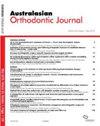MTT法评价不同透明对准材料的细胞毒性
IF 0.9
4区 医学
Q4 DENTISTRY, ORAL SURGERY & MEDICINE
引用次数: 2
摘要
摘要背景:采用MTT分析评估了六种不同的透明对准剂材料的体外细胞毒作用。方法:透明对准器材料样品[Duran (ScheuDental GmbH, Iserlohn,德国),Zendura- flx (Bay Materials LLC, Fremont, CA, USA), Taglus (Laxmi Dental Export pltd, Mumbai, India), Smart Track (Align Technology, San Jose, CA, USA), Zendura (Bay Materials LLC, Fremont, CA, USA), Essix C + (Essix®(Raintree Essix, Inc., 4001 Division St, Metairie, LA-USA)]最初在37°C的密封试管中在盐水溶液中保存8周。按照推荐的ISO标准,将样品的重量除以稀释液的体积,比例为0.1 g/ml。为了评估样品的细胞毒性,使用人牙龈成纤维细胞系(HGF)进行MTT分析。数据分析采用Kruskal - Wallis检验(a=0.05)。结果:Zendura的细胞毒性最强,细胞存活率为67.3±16.20%,Smart Track次之,细胞存活率为87.6±5.53%。Duran、Essix C +的细胞存活率分别为92.6±26.34%和94.9±8.54%,Zendura-Flx、Taglus的细胞存活率分别为106.9±12.76%和113.183±7.45%。结论:Zendura和Smart Track表现出轻微的细胞毒性,而其他材料表现出较大的细胞活力。根据ISO标准,除Zendura外,每个品牌的牙齿矫正器的临床使用可能被认为是可靠的。考虑到标准偏差,Zendura和Duran应谨慎使用。矫正器的供应商应遵守制造商的建议,因为材料磨损可能导致离子释放增加。本文章由计算机程序翻译,如有差异,请以英文原文为准。
Cytotoxicity evaluation of different clear aligner materials using MTT analysis
Abstract Backround: The in vitro cytotoxic effects of six different clear aligner materials were evaluated using the MTT analysis. Methods: The clear aligner material samples [Duran (ScheuDental GmbH, Iserlohn, Germany), Zendura-Flx (Bay Materials LLC, Fremont, CA, USA), Taglus (Laxmi Dental Export Pvt. Ltd, Mumbai, India), Smart Track (Align Technology, San Jose, CA, USA), Zendura (Bay Materials LLC, Fremont, CA, USA), Essix C + (Essix® (Raintree Essix, Inc., 4001 Division St, Metairie, LA-USA)] were initially kept in a saline solution in airtight test tubes for 8 weeks at 37°C. According to the recommended ISO standards, the weights of the samples were divided by the volumes of the dilutions in the ratio of 0.1 g/ml. To evaluate the cytotoxicity of the samples, an MTT analysis was performed using a human gingival fibroblast cell line (HGF). To analyse the data, the Kruskal– Wallis test was applied (a=0.05). Results: Zendura was the most cytotoxic material resulting in 67.3 ± 16.20% cell viability, followed by Smart Track with 87.6 ± 5.53% cell viability. While Duran, Essix C + had 92.6 ± 26.34% and 94.9 ± 8.54% cell viability, Zendura-Flx, Taglus had 106.9 ± 12.76% and 113.183 ± 7.45% cell viability, respectively. Conclusion: While Zendura and Smart Track showed mild cytotoxicity, other materials showed greater cell viabilities. According to the ISO standards, the clinical use of each brand of aligners, except Zendura, may be considered reliable. Taking into account standard deviation, Zendura and Duran should be used with caution. The suppliers of aligners should adhere to the manufacturer’s recommendations since an increase in ion release might arise from material wear.
求助全文
通过发布文献求助,成功后即可免费获取论文全文。
去求助
来源期刊

Australasian Orthodontic Journal
Dentistry-Orthodontics
CiteScore
0.80
自引率
25.00%
发文量
24
期刊介绍:
The Australasian Orthodontic Journal (AOJ) is the official scientific publication of the Australian Society of Orthodontists.
Previously titled the Australian Orthodontic Journal, the name of the publication was changed in 2017 to provide the region with additional representation because of a substantial increase in the number of submitted overseas'' manuscripts. The volume and issue numbers continue in sequence and only the ISSN numbers have been updated.
The AOJ publishes original research papers, clinical reports, book reviews, abstracts from other journals, and other material which is of interest to orthodontists and is in the interest of their continuing education. It is published twice a year in November and May.
The AOJ is indexed and abstracted by Science Citation Index Expanded (SciSearch) and Journal Citation Reports/Science Edition.
 求助内容:
求助内容: 应助结果提醒方式:
应助结果提醒方式:


